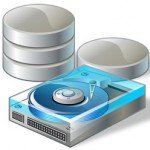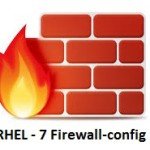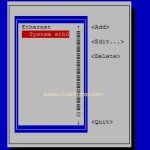KVM is free open source full virtualization solution for Linux on x86 hardware. After the cloud revolution, KVM(Kernel Based Virtual Machine) Virtualization is a hot topic in the industry. Most of the cloud technologies will prefer to use the KVM hypervisors over XEN due to it’s simplicity. Redhat and Ubuntu’s default hypervisor is KVM. Contrast to these vendors, Oracle Linux […]
RHEL7
How to Patch/Update RHEL 7 without internet connection ?
Linux is not a windows operating system to install the security patches and other bug fix patches for every week. At the same time , it’s not like an Unix operating system where you no need to patch it for years. You should plan to patch the Redhat Linux yearly twice to eliminate the security […]
How to Map the VMware virtual Disks for Linux VM ?
Most of the VMware virtual machines are configured with few virtual disks with different size according to the project requirement. When it comes to the Linux VM , there will be a dedicated disk for the root filesystem and other disks are used for application/data. So whenever there is request for resizing the existing drive , it […]
How to Measure the bandwidth between Linux / Solaris hosts ?
All the new servers are shipping with 10 Gbps built-in network adapters . At the same time, servers are virtualized and one physical server may hosts many virtual servers. For an example, VMware ESXi hypervisor will be directly installed on physical server and multiple VM’s will be created on top of that. So all the VM’s will share the same 10Gbps […]
How to Generate and Measure IOPS in VMware Guest ?
Are you a system architect ? Are you planning to convert the physical servers to VM ? If yes, perform the IOPS test on the physical machines prior to migrating it to VM. If you have test virtual machine in the targeted VMware infrastructure, perform the similar IOPS test to compare the results. If the […]
How to configure the firewall using firewall-cmd ?
In the last article, we have opened the port (80) for http service using firewall-config graphical utility in Redhat Enterprise Linux 7. As a Unix/Linux admin , would you prefer to use “GUI” over “command line” ? I don’t think so. Most of the Unix/Linux system administrators will go with the command line. firewall-cmd is a […]
Playing with firewalld on RHEL 7
The Linux kernel includes a powerful network filtering subsystem called netfilter. The netfilter subsystem allows kernel modules to inspect every packet which are travelling to the system. Any incoming, outgoing and forwarded network packets can be inspected, modified ,dropped or rejected in a programmatic way ,before reaching to the user space. But these programs needs […]
Are you in VM or Physical host ? RHEL -7
The whole world is moving towards virtualization. Unless you maintain the inventory on CMDB , it is very difficult to find the server location and configuration. The hyper-visors like VMware vSphere, Microsoft Hyper-V, Xen and KVM supports Linux as virtual machine. If you have the proper CMDB for the virtual machine, you can easily find […]
Disk Partitioning – MBR vs GPT on RHEL -7
Disk partitioning allows a hard-drive to be divided in to multiple logical partitions on Redhat Enterprise Linux. The multiple partitions can be used to create filesystems and it can be mounted in different mount points. Most of the operating systems are still using the MBR partitioning scheme and it has dictated how disks should be partitioned […]
RHEL – 7 Network Management – nmcli or nmtui
nmlci is a wonderful command to configure the network profiles on Redhat Enterprise Linux 7. nmcli also supports the command completion function by pressing “tab” key but still you need to use the quotes properly. nmtui is an alternative command for nmcli which is based on “Text User Interface”. It will be useful for RHEL-7 […]









